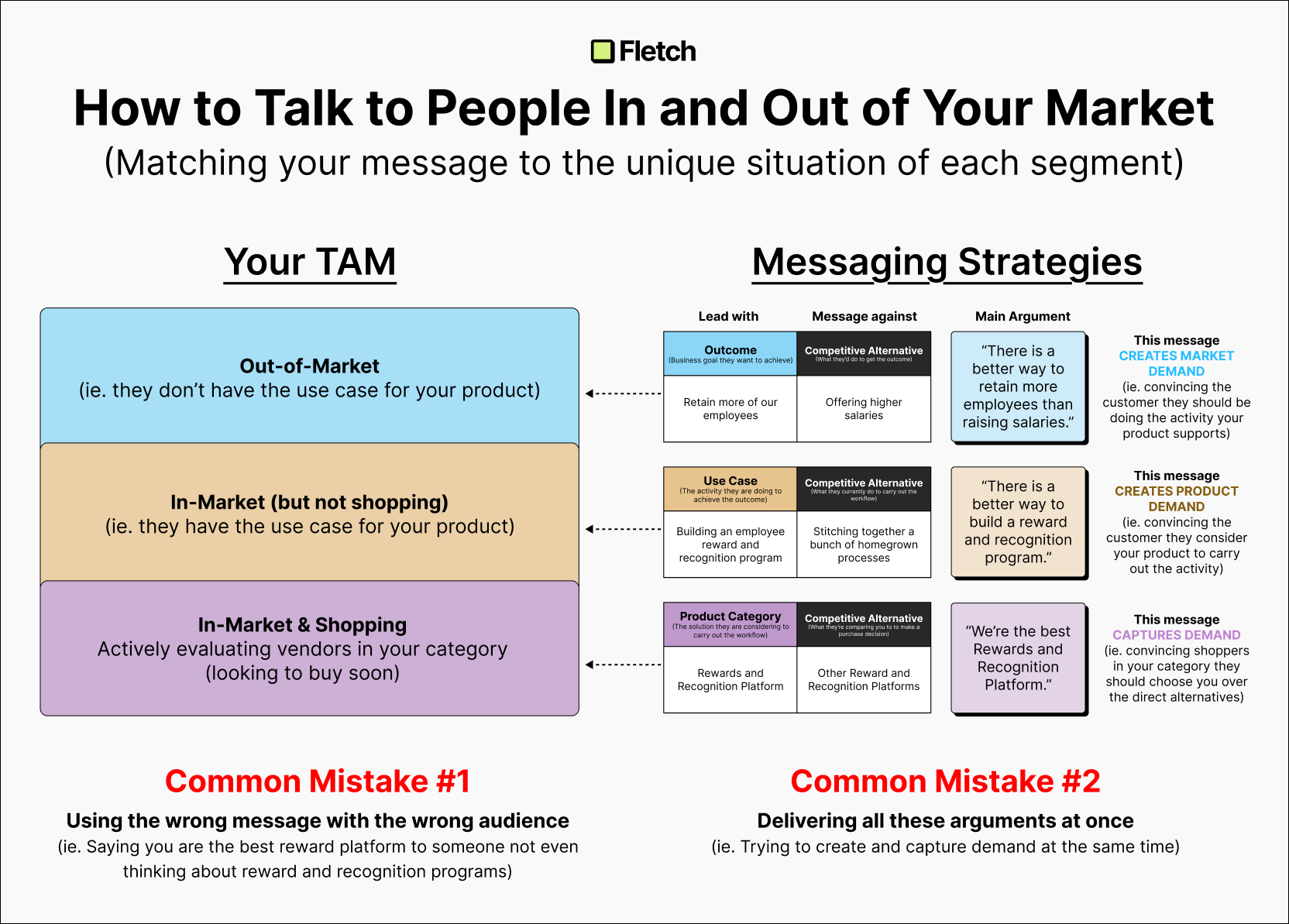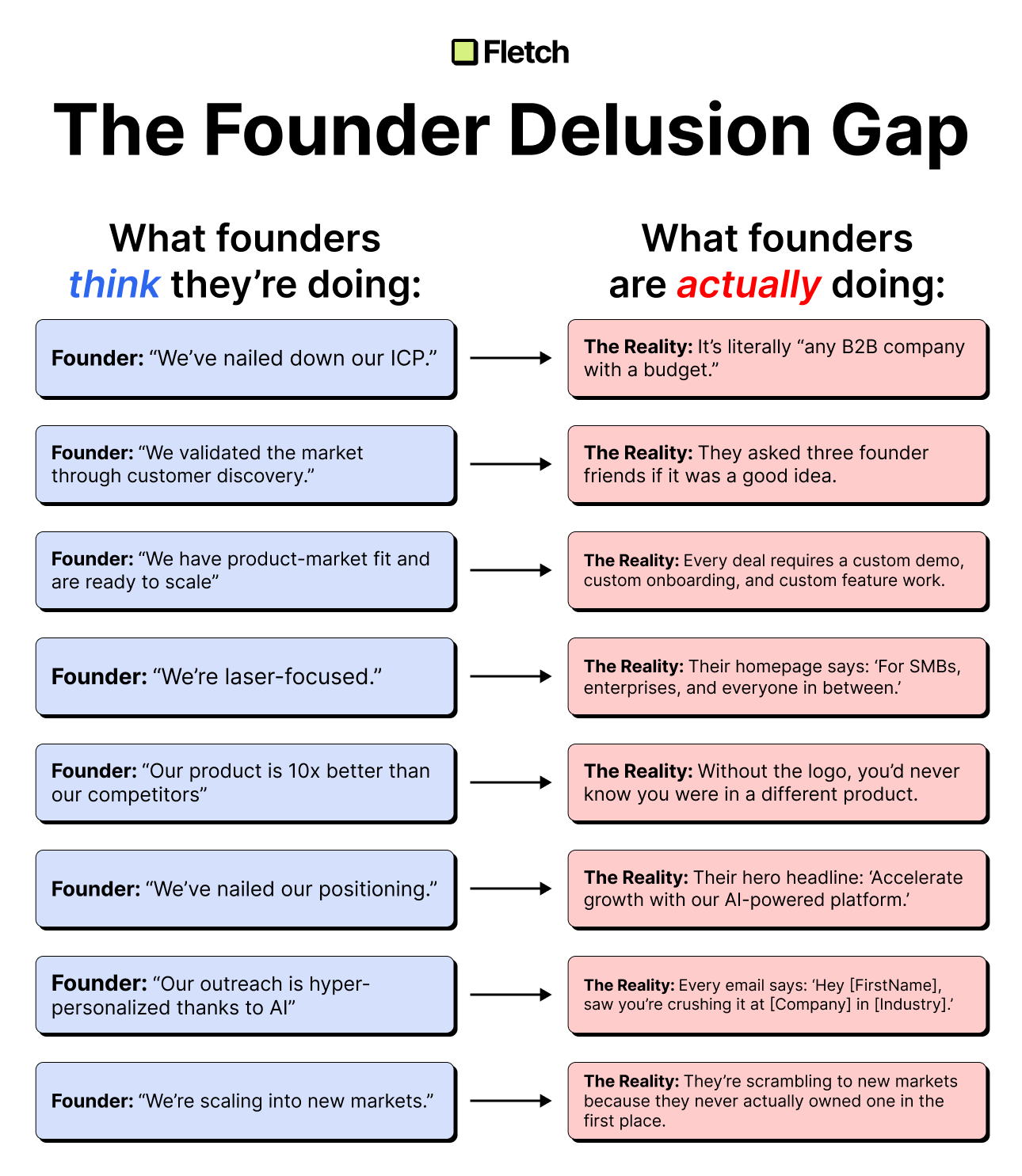How to talk to people in and out of your market


A good argument used in the wrong context is a bad argument.
We’ve all experienced this as individual consumers.
→ The car salesmen that’s trying to sell you a car, when you’re focused on an oil change for the car you already own.
→ The jewelry dealer who pitches you a watch in the mall, when you’re just trying to get to the apple store.
It’s not that the arguments these sales and marketing people are saying that are bad.
It’s that the timing is off.
The same thing happens in B2B.
Here are the 2 most common ways this shows up in B2B:
❌ Jumping right into your product differentiation to an audience that isn’t even thinking about your category
“We’re the fastest recruiting platform for high-volume hiring.”
…said to a company that just implemented a hiring freeze.
“We’re the best SOC 2 compliance automation tool.”
…said to a founder who hasn’t moved upmarket to serve enterprises yet.
“We’re the best rewards & recognition platform”
…said to a company that has never thought about building out an employee reward program.
❌ Summarizing the entire funnel story into one long narrative, that no one has time for
“Companies need to find a better way to retain employees than just offering higher salaries and promotions. They need to be building high quality employee reward and recognition programs, instead of sitching together lackluster homegrown rewards processes. And good news! We’re the best rewards and recognition platform compared to every other platform on the market.”
^This type of summarized message makes executives and strategic narrative consultants feel good.
But it’s not going to land in the market.
Do you think someone is going to stop and listen to your story explaining the problem they are not yet solving, learn about the ways it can be solved, and then learn about why they should choose you… all in one sitting??
No way!
That education takes time.
(especially for big problems and expensive software tools)
—
These mistakes highlight the importance of market segmentation, and the effect it has on your positioning and messaging.
Instead of trying to throw everyone into one big bucket (TAM) and developing a universal positioning strategy, marketers need to lean into the fragmentation.
Draw clear lines of who is actually in their market and who is not.
Do they actually have the use case for your product?
Or do you have to convince them to start doing the activity your product supports?
Or do they already have a solution for carrying out that use case?
Each of these audiences are VERY different in what you are competing with, how you would approach them, and what you would say.
(see image for example)
Yes, all this segmentation and unique message develop takes time to develop and deploy.
But it's this diligence that separates the great marketing teams that get traction from the spam-cannoning hacks that have to buy 100s of new domains just to send you their generic message.

Ben Wilentz
Founder, Stealth Startup



